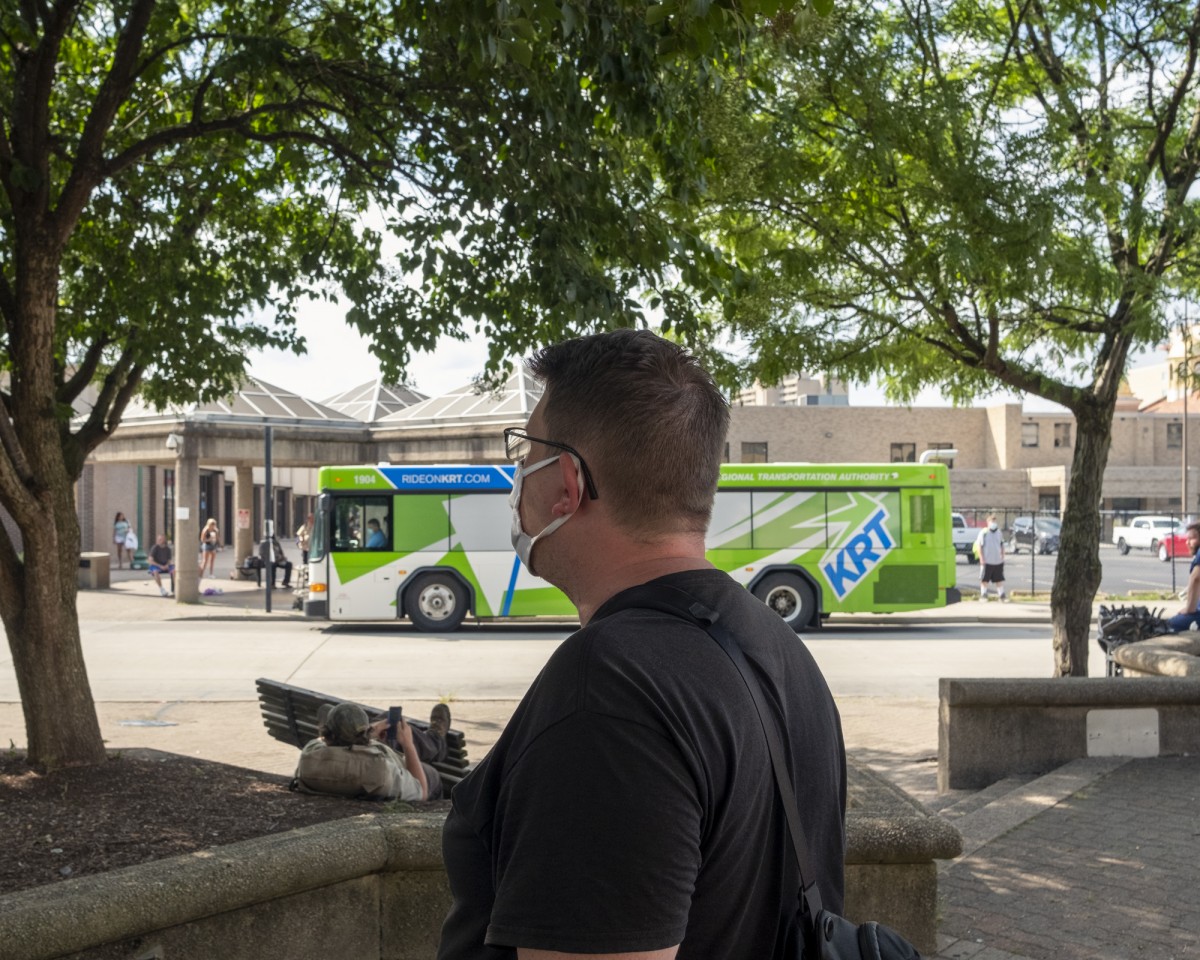As many states prepare for increased mail voting due to the coronavirus pandemic, President Donald Trump has repeatedly raised concerns about the voting process. He’s falsely suggested that there’s a difference between traditional absentee voting and states’ expanded mail voting, especially when it comes to verifying and securing votes.
At a July 30 press briefing, Trump was asked about a tweet earlier that day in which he floated delaying the Nov. 3 election. That idea was quickly shot down by numerous Republican leaders as well as Democrats.
At the briefing, Trump repeated his objections to voting by mail. “Absentee is different. Absentee, you have to work. You have to send in for applications. You have to go through a whole procedure,” Trump said.
He went on to distinguish between his right to have a ballot delivered to him and the rights of the general public to cast votes via mail.
“For instance, I’m an absentee voter because I can’t be in Florida, because I’m in Washington,” Trump said. “I’m at the White House, so I’ll be an absentee voter. We have a lot of absentee voters, and it works. We’re in favor of absentee, but it’s much different than millions of people in California. They’re going to send out tens of millions of voting forms. Well, where are they going to go? You read where postmen are in big trouble now. You read where city councils are in big trouble now. Voter fraud all over the ballot.”
Trump has made this point numerous times this summer.
• June 25: “Like, I’m in White House, and I have to vote in Florida, et cetera, et cetera. You’re an absentee; that’s okay. But people go through a process for that…But the mail-in ballots, they mail them to anybody. And they send them out by the millions. I think I read over 30 million ballots are going to be sent out in California.”
• July 10: “Absentee Ballots are fine because you have to go through a precise process to get your voting privilege. Not so with Mail-Ins.”
• July 15: “So absentee ballot: Great. Mail-in ballot: Absolutely no good. It makes no sense. A governor sends out millions of ballots all over the place; they don’t know where they’re going.”
We have debunked Trump’s falsehoods about voter fraud and election rigging, including for mail-in ballots. Proven cases of non-citizens casting ballots are rare.
For this fact-check, we will explain why absentee and mail-in ballots are the same thing, and that, whatever term you use, the verification process is the same.
“There’s really no distinction,” said Darren Hutchinson, a law professor at the University of Florida and an elections expert. “So, it’s basically a falsehood that’s been repeated over and over and over again.”
Voting in a pandemic
The coronavirus pandemic has raised concerns about voters’ safety as they wait in crowded polling places on Election Day — some may choose not to show up at all. Because of this, some states have encouraged the use of mail voting. (Five states had already run virtually all-mail elections: Colorado, Hawaii, Oregon, Utah and Washington.)
In California, Gov. Gavin Newsom signed a law requiring counties to send all active registered voters a mail-in ballot about a month before the Nov. 3 election, joining the all-mail election states plus Vermont and Washington D.C. Other states are allowing voters to request those ballots, either online or by mail.
In the states that allow broad use of mail ballots, there is no distinction in how a voter requests “absentee” ballots and other types of mail ballots. Trump may not like the policy of sending out ballots to all registered voters, but it is wrong to suggest that ballots cast that way are different from absentee ballots or that they aren’t subject to the same scrutiny.
Part of the linguistic confusion may be generational: Many states have phased out the use of the term “absentee,” including California and Florida.
In 2016, for instance, the Florida Legislature unanimously voted to change the phrase “absentee” to “vote-by-mail,” in order to ease confusion among voters who mistakenly believed that they had to be away from home to request a ballot by mail. Some election advocates now use the term “vote at home,” because ballots in some states can be dropped off in person at designated lockboxes rather than mailed.
So when Trump says he’s an absentee voter in Florida because he’s “at the White House,” that’s not accurate. It doesn’t matter where he is; Trump, like any other registered Florida voter, can cast a ballot without going to an in-person site.
No differential treatment
Regardless of the terminology, elections experts say there is no difference between how “absentee” and “mail-in ballots” are treated.
In 34 states and Washington, D.C., voters can use “no excuse” absentee voting, according to the National Conference of State Legislatures. Under no-excuse absentee voting, the voter does not need to attest that they will be out of the jurisdiction on Election Day, or that they cannot get to the polls because of an illness or disability.
There is no special process that absentee out-of-town voters go through that other mail-in voters do not, Hutchinson said.
The verification process actually begins well before any ballot is sent out. It starts with voter registration, a process which requires officials to determine if someone is eligible. Election offices also periodically update their registration lists, including removing inactive voters or those who have died. Many states are members of the Electronic Registration Information Center, which sends each member state reports showing voters who have moved within their state or out of state, have died or duplicate registrations.
Once a completed ballot is received by election officials, the identity of every voter is confirmed.
In California, for instance, county elections officials check every vote-by-mail ballot to see whether the voter has already cast a ballot elsewhere. All ballot envelopes have unique barcodes, and local jurisdictions use specific paper types and watermarks for their ballots. Officials then compare the voter’s signature against the signature on the voter’s registration record.
“Fundamentally, it’s the same thing,” said Amber McReynolds, Denver’s former director of elections and chief executive officer of the National Vote at Home Institute. “Ballots are handled exactly the same regardless of whether or not it’s an absentee ballot or a vote-by-mail ballot.”
States typically allow voters an opportunity to correct mistaken information they’ve filled in on their ballot, or if officials see too much of a discrepancy between the signature on file and the signature on the ballot. When voters are notified of any problems with their information on the envelope, they are able to fix the problem in time to have their ballot counted.
Procedures to help voters track their ballots also helps with the verification process. For example, voters in Palm Beach County, where Trump is a registered voter at Mar-A-Lago, can use the county website to track when the ballot was mailed to the voter and when it was received by the elections office. In Denver, voters can sign up to get information via text about their ballot, including when it was approved to be counted.
White House press secretary Kayleigh McEnany said July 31 the increase of mail ballots is the problem this cycle. “Mass mail-out ballots are going to be more at risk of fraud,” she said, citing multiple news reports about delays in tabulating results or rejection of mail ballots, including those that arrived after the deadline.
There have been delays in counting mail-in ballots, including in New York, and other problems including voters who said their requested ballots never arrived. All of those problems raise concerns about how some states that are unaccustomed to widespread voting by mail will gear up for the Nov. 3 election.
However, that doesn’t mean that there is any difference in verifying these votes.
Our ruling
Trump said, “Absentee is different (from mail-in ballots). Absentee, you have to work. You have to send in for applications. You have to go through a whole procedure.”
There is no distinction between absentee voting and voting by mail. All mail ballots, regardless of how they are requested, are treated the same once they’re cast, and they require verification before being counted.
We rate this claim False.
This article was originally published by PolitiFact. See the sources for this fact-check



